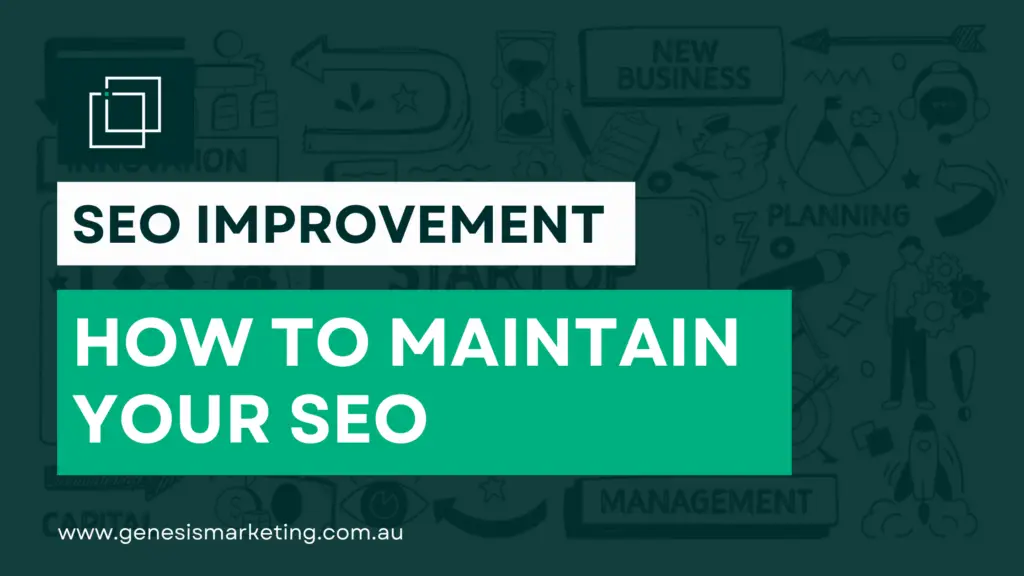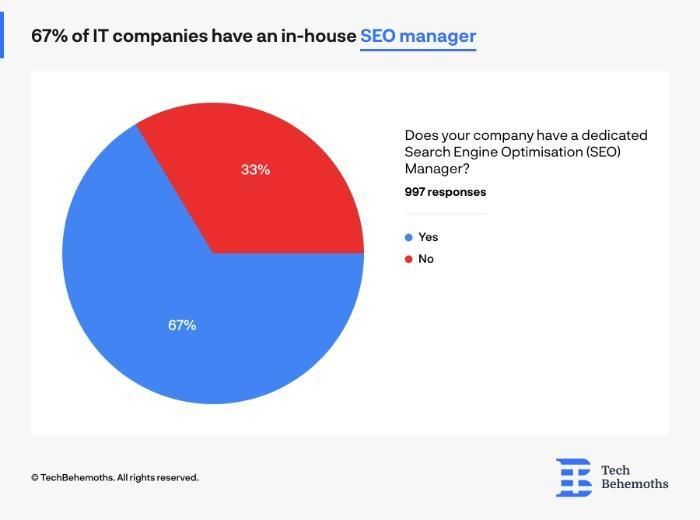How to Maintain Your SEO Guide
The world of websites and search engine rankings is constantly evolving, with new trends and developments appearing regularly. Google, in particular, is known for frequently updating its algorithm and ranking system, which can have significant impacts on how websites are ranked and found by users.
These changes can be difficult to keep up with, but they are an important part of the online landscape, and understanding them can be crucial for businesses and individuals looking to succeed online.
Even with the most established websites that are attracting high rates of traffic, there is always work to be done on SEO.
The are many contributing factors to SEO, and it’s important to stay abreast of all of them.
Image optimisation, Google Analytics 4 (GA4), user intent, and semantically related keywords are just some of the emerging trends that are influencing your SEO results.
How Can I Keep on Top of My SEO?
Optimising your SEO is a large task, it involves incorporating multiple types of SEO into one comprehensive strategy.
There are four primary categories of SEO for digital marketing:
- Technical SEO. This refers to any actions you take to make your site easier for search engines to crawl and index. These are the non-content elements of your site like its loading speed, mobile compatibility, and site map. Technical SEO will drive your organic rankings.
- On-Site SEO. This refers to optimising elements on your website like meta descriptions, images, and headings. This helps you to rank higher and to drive more relevant traffic.
- Off-Site SEO. This is your backlinks profile. A backlink is where another website hyperlinks your page to theirs. Building a list of backlinks from reputable sites increases your credibility to Google, and in turn, improves your rankings.
- Local SEO. This helps you to rank well in searches that are specific to your geographical area. This type of SEO comes into play when people add modifiers to their searches like “near me.” This type of audience seeks out products and services in their area, which means they already have a vested interest in your business.
- Enterprise SEO. This is the big-picture form of SEO. It looks at your overall target market, competitor market, and business goals. Generally, this strategy is used for larger organisations that have a large number of pages on their website.
At times, SEO strategy can be daunting, but it is worth investing your time and resources into because your competitors are.
By continuing to adapt current strategies, as well as implement new ones, you are making sure your competitors don’t have an edge over you when it comes to rankings.
Keep Your Finger on the Pulse of Google’s Algorithm
Just as SEO strategy continues to change, so does Google’s algorithm.
We have seen many big updates from Google, there was Panda that favoured quality content, and Penguin that targeted those who were using disingenuous backlinks. Hummingbird was focused on user intent, then Pigeon was primarily about local SEO.
The large changes can send shockwaves through the digital marketing community, but the minor changes are just as important to keep abreast of.
These minor changes can happen daily at the very least!
Each time new updates surface, it’s important to see how they stack up against your current strategy, and whether adjustments can be made to cater to these updates.
Missing them could result in your SERPs taking a hit, and your overall traffic slowing down.
New Content for SEO
There is a demand to continue creating fresh content for your website, however, it’s important that this new content is still driving your overall SEO strategy.
This will help your new pieces of content reach the right audience and attract the traffic it deserves. One survey shows that Google drives eight times more traffic than all the social media sites combined, and the average top blog gets 66.47 per cent of traffic from search engines.
When creating your content, you can use the Semrush SEO Writing Assistant Tool or several plugins that will also help you to optimise the SEO in your content.
The main strategies you want to address are:
- Keywords and semantically related keywords
- Readability
- Creativity
- Tone of Voice
- Interlinking
- Meta tags and description
- Informative content
Consider User Intent
As your users’ intent changes, so will your SEO strategy to ensure you continue to meet your audience’s needs.
User intent can be influenced by many factors, including the device they are searching on, and whether they are searching for products, services, information, navigation, and seasonal needs.
Once you have identified your current user intent, you will need to research keywords, competitor keywords, and common search phrases.
Combine your SEO With Other Strategies
Paid advertising goes hand in hand with SEO, as do paid outreach and sponsored posts.
SEO is often a slow-burn strategy, you may get spikes in traffic early, but generally, it is a long-term project.
Paid advertising and outreach provide short-term results by instantly increasing your traffic, so together they produce a quality digital marketing strategy.
By combining them, you can improve the results of both. SEO will help your paid efforts reach the right audience.
The Rewards for Maintaining Your SEO
Though it takes time, continuing to optimise your SEO pays dividends for your business.
Larger companies are now going as far as appointing a full-time employee dedicated to managing SEO strategy and implementation.
Your SEO can assist your website in many ways, like improved organic search rankings, increased website traffic, and high Google rankings. Beyond this, a solid SEO strategy can transform your business with conversions, and ultimately increased sales.
According to a survey by Tech Behemoths, 80 per cent of businesses surveyed were familiar with SEO tools, and 67 per cent employed a dedicated SEO manager.



